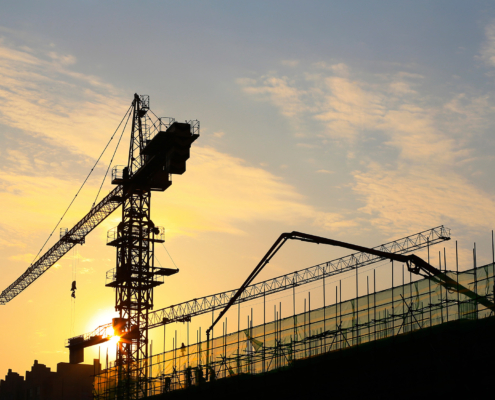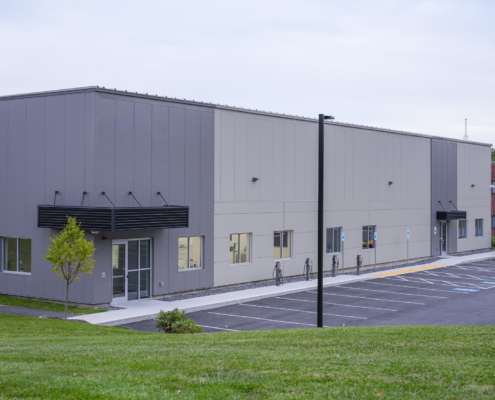 https://www.hokansoninc.com/wp-content/uploads/2025/03/Cranes-are-silhouetted-at-a-construction-site-at-sunset.jpg
1250
2000
AbstraktMarketing
/wp-content/uploads/2022/10/Hokanson-Logo-Color-SVG-V2.svg
AbstraktMarketing2025-03-27 13:37:122025-04-01 15:34:42How Build-to-Suit Construction Saves Costs in the Long Run
https://www.hokansoninc.com/wp-content/uploads/2025/03/Cranes-are-silhouetted-at-a-construction-site-at-sunset.jpg
1250
2000
AbstraktMarketing
/wp-content/uploads/2022/10/Hokanson-Logo-Color-SVG-V2.svg
AbstraktMarketing2025-03-27 13:37:122025-04-01 15:34:42How Build-to-Suit Construction Saves Costs in the Long RunTrends in Financial Facility Design: What’s Driving Bank Construction
Banks today face unprecedented pressure to evolve to meet modern customer demands. From streamlined layouts to cutting-edge technology, the entire approach to bank design and construction is rapidly changing. Staying informed on these trends is crucial for financial institutions aiming to remain competitive and foster lasting client relationships.
How Consumer Expectations Influence Layouts in Bank Construction and Design
Customer preferences and behaviors are central to how banks construct and design their facility. A bank is more than a place to withdraw or deposit funds, as it now serves as a touchpoint for relationship building, personalized service, and a wide range of financial needs. Consequently, financial institutions and design teams must craft environments that prioritize convenience, efficiency, and engaging experiences that prioritize the following:
- Accessibility and Convenience: Customers expect easy access to banking services without long wait times or complicated processes.
- Open-Concept Floor Plans: Modern banks are embracing open and welcoming designs to encourage interaction and offer more personalized support.
- Comfortable Waiting Areas: Inviting waiting spaces with seating, coffee stations, and free Wi-Fi enhances the customer experience.
- Dedicated Consultation Zones: Designated semi-private spaces foster better communication between clients and staff, facilitating confidential financial discussions.
- Digital Self-Service Stations: Many branches incorporate kiosks where customers can complete routine transactions, freeing up staff to focus on higher-level services.
By integrating these features, banks can create a customer-centric layout that balances technology with personal interactions. An efficient and modern design can lead to more satisfied clients, fostering brand loyalty and long-term growth.
Emerging Commercial Construction Trends for Financial Facilities
As financial institutions strive to remain relevant, new bank construction and design trends have taken center stage. These trends address everything from aesthetics to security, reflecting a holistic approach to meeting modern banking needs. By staying ahead of these developments, banks can position themselves as forward-thinking institutions dedicated to providing top-notch services.
Modern Aesthetics
Gone are the days when heavy counters and closed-off cubicles characterized banks. Contemporary financial facilities focus on sleek, minimalist designs incorporating natural light, modern materials, and understated color palettes. This shift in aesthetics signals a break from traditional, formal banking environments, making them feel approachable and welcoming.
By emphasizing clean lines and open spaces, institutions communicate a message of innovation and transparency—qualities that resonate with today’s digitally savvy customers and encourage them to view the bank as a progressive financial partner.
Sustainability
Environmental responsibility has become a top priority across all sectors, and banking is no exception. Many financial institutions invest in eco-friendly materials, energy-efficient HVAC systems, and LEED-certified construction practices. In doing so, banks reduce their carbon footprint, lower operational costs, and align themselves with the values of environmentally conscious clients. Solar panels, green roofs, and efficient lighting systems are becoming common features. This focus on sustainability in real estate development appeals to both customers and staff, enhancing the bank’s reputation and underscoring its commitment to responsible corporate citizenship.
Security Features
Security remains a vital concern in financial facilities. Technology advancements have introduced next-generation solutions that protect against both physical and digital threats. Biometric checkpoints, state-of-the-art alarm systems, and bullet-resistant transaction windows offer enhanced physical security. Meanwhile, secure network infrastructures and data encryption safeguards protect against cyberattacks. These measures work in tandem, assuring clients that their assets and personal information are protected. By integrating robust security features into a bank’s design, institutions can build trust and solidify their reputation for reliability and safety.
Updated Technology
Today’s banking customers expect convenient, high-tech solutions that streamline financial transactions. Automated systems, advanced ATMs, and innovative drive-thru kiosks reduce wait times while providing round-the-clock service. These digital capabilities supplement in-person interactions, allowing staff to focus on consultative and advisory roles. Banks that integrate mobile apps for scheduling appointments or scanning checks further enhance customer convenience.
By investing in cutting-edge technologies, financial institutions signal that they value efficiency, embrace digital innovation, and are ready to serve clients with modern expectations.
Flexible Multi-Use Spaces
Flexibility is becoming increasingly important in bank design. Institutions often designate spaces that can accommodate everything from small seminars on financial literacy to community events and business networking sessions. Movable furniture, modular partitions, and convertible seating arrangements make it simple to reconfigure the branch layout for different purposes. This approach maximizes the utility of each square foot and creates opportunities for deeper community engagement. Banks become local hubs for financial education and collaboration by hosting events and workshops.
Integrated Branding
Modern banking facilities harness design elements to reinforce a consistent brand identity and customer experience. Prominent logos, recognizable color schemes, and cohesive design choices throughout the branch help strengthen brand awareness. Digital signage showcases promotions, community involvement, or testimonials, while curated art and décor add a personal touch. This approach to branding goes beyond aesthetics, influencing how clients perceive the institution’s values and priorities. When done well, integrated branding elevates the overall customer experience and enhances client loyalty.
Transform your financial facility with Hokanson Companies’ cutting-edge bank construction and design expertise.
How to Ensure Your Bank Meets Modern Consumer Expectations
Financial facilities must embrace new technologies and best practices to retain consumer loyalty and thrive in an increasingly competitive market. Upgrading hardware such as ATMs or drive-thru systems can significantly reduce wait times, and investing in cybersecurity measures ensures that clients’ sensitive information remains protected.
Staff training is equally essential, as well-informed employees who can navigate modern software and security systems deliver smoother, more efficient service. Banks should also consider frequent assessments of layout, design elements, and overall user flow, pinpointing areas for improvement that align with current banking trends. Institutions can maintain an environment that consistently meets or exceeds client expectations by employing a proactive, systematic approach.
Ensure a Modern Bank Construction Project With Hokanson Companies
At Hokanson Companies, we specialize in leading-edge credit union construction and bank design solutions that elevate the customer experience and align with today’s industry standards. Our expert team is adept at seamlessly integrating modern aesthetics, security measures, and the latest technologies into financial facilities, ensuring each project meets evolving consumer demands.
With decades of commercial construction and real estate experience, we offer comprehensive guidance, from initial planning to final build-out, keeping your objectives at the forefront. Turn to Hokanson Companies for your expertise and support to create a thriving, future-ready banking environment.



